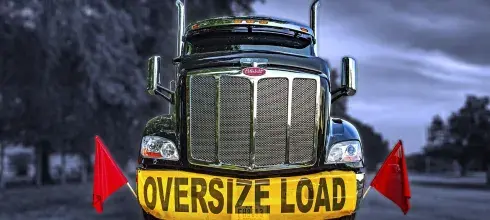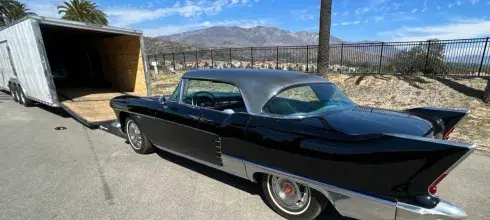If you’ve never bought a used car before you might be feeling a little daunted by the whole idea. There’s nothing worse than buying a lemon, so what can you do to avoid that scenario?
In this used car inspection checklist, we’ll guide you through the process and some of the most important things to check when you inspect a used car before buying. Follow this checklist, and you’ll reduce the risk of driving away in something you later regret buying.
1. Make sure you’re prepared
A vehicle inspection plays a vital part in the process of buying a used car and it pays to be prepared. Gather the following items before you go to inspect the used car:
- A pen and notebook so you can record all the necessary information, such as the asking price, mileage, the vehicle’s make, model, year, and any other information you consider relevant. Alternatively, use a notebook app on your phone.
- Paper towels to help when you check the engine oil level.
- A flashlight will be helpful if you want to check for any signs of corrosion or rust.
- A magnet will be needed to check any bodywork issues
- Get the vehicle’s history report
2. Review the paperwork
Something else to check before you get down to the nitty-gritty of inspecting the vehicle is to check the vehicle matches the paperwork and the information provided in the advertisement. It’s not uncommon for people to embellish the truth or be inaccurate in the information given.
Things to check include:
- Vehicle registration and title: Confirm the person who is selling the vehicle is its legal owner. You can do this by comparing his name on the ID to the name listed on the vehicle’s title.
- Liens: Review the title to check for a lien or anything else that prevents the owner from selling the vehicle.
- Vehicle history report: Check this report because it provides a lot of information about whether the vehicle was involved in a major car accident, or the title was rebuilt. This would suggest the vehicle was considered totaled or junked.
- Maintenance schedule: Ask the owner for paperwork that confirms regular maintenance. If a vehicle is regularly maintained, it indicates that what’s under the hood is in good condition and the vehicle has been well looked after.
3. Check the exterior of the vehicle
When you’re inspecting a used car, a good place to start is the exterior. Check the following items:
- Windshield: See if there are any signs of cracks or chips. They can start small and grow over time, especially if you regularly drive at high speeds.
- Locks: Check that the lock and unlock features work from the driver and passenger’s side.
- Lights: Examine the different headlights and hazard lights to ensure they’re working properly. Check the high beams and directional signals work.
- Bodywork: Look all over the body of the vehicle for signs of damage, rust, or paint chips. Also, check for scratches. All these imperfections could help you negotiate a lower price.
- Doors: Make sure the doors align and close properly.
4. Inspect the tires
The next step in this checklist is to carefully inspect the tires. Some key factors to consider include:
- Brand name: Ideally, you want the tires to be from a reputable company such as Michelin and Goodyear. If you don’t recognize the brand name, research the tires online.
- Matching tires: The tires should be from the same brands as this will ensure they wear evenly.
- Signs of damage: Look for small scratches or damage that could get worse over time. Also, check there are no bubbles on the tire as this would indicate significant tire damage is likely in the future.
- Tire treads: The tire tread should be deep enough to provide proper grip on the road. If the tires do not have the legal depth of tread, you could ask the seller to reduce the selling price because you’ll need to replace the tires.
- Spare tire: Don’t forget to check the spare tire as you might need to use it at some point in the future. If it’s in poor condition or missing, you can use this point when negotiating the price.
- Tire pressures: The tires should be correctly inflated because this will ensure a smooth and safe driving experience.
5. Take a close look at the engine
The next step in this guide on how to inspect a used car is to dig a little deeper and examine some of the vehicle components, starting with the engine.
When it comes to the engine, you don’t need to check every single part. Rather, you should focus on the oil level and any signs of oil leaks.
Also, consider checking the oil filter and examining it for a thick layer of tar covering it. This could cause major engine damage.
Don’t just use your eyes when inspecting a used car. Your nose can also reveal hidden issues. For example, if the engine smells weird when you start the engine, it’s an indication of an internal problem.
6. Examine the battery
The battery is another major component that people often overlook and run the risk of falling victim to a scam. It’s easy to check the battery’s condition with a quick visual inspection.
Warning signs include battery inflation or battery terminals and cables that are rusty, or corroded.
7. Check the transmission
The next step in our guide on how to inspect a used car before buying relates to the transmission. It’s not complicated, but the procedures depend on whether the vehicle is manual or automatic.
For a vehicle with an automatic transmission, check the transmission fluid and make sure it’s clean and has no signs of contamination.
For a vehicle with a manual transmission, you should check that the gears shift smoothly and there’s no problem with the clutch. Don’t forget to check the vehicle’s reverse gear.
8. Inspect the brakes
The next item on the checklist is to look at the brakes. This is one of the most sensitive and critical parts of a vehicle and is vital for your safety.
Check the brake pedals, looking for a burning smell or weird vibration as these could indicate that the braking system is not working properly.
9. Check the steering system
The steering system also plays a key role in a vehicle’s safety and ensures you have good control of your vehicle when driving at high speeds.
How do I inspect a used car and its steering system? You should take the vehicle for a test drive to find out whether it pulls to one side more than the other. If this happens, it could be an indication of issues with the steering system.
You also need to check whether the steering system vibrates at any time. You’ll feel it through the steering wheel and it’s another indication of problems.
10. Take a close look at the interior
With all the mechanical components carefully inspected, it’s time to move on to the interior. This is where you’ll spend most of your time, so it needs to be comfortable. However, comfort is not the only consideration. Take note of the following too:
- Closely inspect the overall interior, looking for cracks, damage, or leaks
- Check that the doors close properly
- Make sure all the dashboard lights and gauges work correctly
- Turn on the AC system to make sure it works
- Switch to the heater and check that works too
- Make sure the seatbelts function correctly and close and open properly
- Roll the windows up and down and check for any window issues
- If the vehicle has a sunroof, make sure it works properly and that there are no leaks
- Test the infotainment system and other components such as the stereo.
What are 5 signs you shouldn’t buy a used car?
Buying a used car might seem like a good idea, especially if your budget is limited. However, there are times when you should walk away from making a deal. It’s important to be aware of the following warning signs:
Lack of repair records
A seller should be able to provide repair and maintenance records to show that they’ve taken good care of the vehicle. If they can’t provide anything, be very skeptical about what they say.
Obvious signs of abuse and neglect
Dents, dings, ugly stains, and strong odors are indications that the vehicle’s owner may not have treated the vehicle well. Superficial signs of neglect may not be such a bad deal on their own, but they do suggest that the vehicle may not have been cared for mechanically.
Recent evidence of mechanical band-aids
Be very wary of a vehicle with recent detailing or cleaning as the owner could be trying to hide defects. A good example is an engine compartment that’s been recently cleaned. The owner may have been trying to remove evidence of an oil leak.
High-performance cars
High-performance cars are not always the best choice if you’re looking for a used vehicle. Cars of this type are often put under significant stress, particularly the engine, suspension, and other expensive systems.
Smokers
If the owner of the used vehicle is a smoker, you could find the smell of smoke very difficult to remove from the vehicle.
Now you know what to look for, it’s time to think about how you get your used car home. The internet and abundance of online car-selling sites mean you’re not restricted to buying in your locality. You can look for your dream car anywhere in the country and SGT Auto Transport will make sure it’s delivered safely and on time.
To find out how much it costs to ship a car, you can use our online quote calculator.
Want to know the cost of shipping a car with us?
Alternatively, give our shipping advisors a call at (864) 546-5038 or use our {{live chat}} option.
FAQs
How do you tell if a used car will be reliable?
When it comes to buying a used car, an inspection checklist is essential. Here are some tips to help you determine if the car will be reliable:
- Inspect the car
- Read the window sticker
- Research online
- Ask for maintenance records
- Check for recalls
- Test drive the car
- Ask for a vehicle history report
- Consider the reputation of the brand
How many miles is too many for a used car?
There is no definitive answer to this question, but as a general rule, you should avoid a used car with more than 12,000 - 14,000 miles per year of ownership. You might also want to consider 200,000 miles as the upper limit.
When buying a used vehicle should you check the engine?
Yes, it is highly recommended to check the engine when buying a used vehicle. The engine condition is crucial as engine problems can be expensive to repair.
How can you tell if a used car is bad?
To determine if a car is in good condition, you should follow these steps:
- Inspect the vehicle’s interior
- Check the vehicle’s history
- Perform a thorough inspection
- Read the window sticker
- Take the vehicle for a test drive







